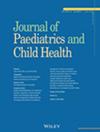Epidemiology of Paediatric Injuries Related to Scooter Use in 2020
Abstract
Aim
Powered, or electric, scooters (e-scooters) have recently increased in popularity, resulting in more e-scooter-related trauma. Paediatric e-scooter injuries are of particular concern. Motorised scooter injuries are logged in the National Electronic Injury Surveillance System (NEISS). There are specific codes for powered versus unpowered scooters, allowing for differentiation of scooter-related injuries. Our primary objective was to describe e-scooter injury epidemiology for the year 2020 amongst e-scooter riders to best inform medical providers and public health officials of the most common injuries. Secondary objectives compare powered versus unpowered scooter injuries.
Methods
We queried the US Consumer Product Safety Commission's (CPSC) NEISS database for incidents involving powered and unpowered scooters during 2020. We included patients 0 through 18 years old. We excluded patients without known injury and those who left without being seen.
Results
Two-hundred and thirty one patients with powered scooter injuries and 324 with unpowered scooter injuries met the inclusion criteria. Within the powered cohort, 66.7% (154/231) were male and the average age at injury was 11.4 years. Patients using powered scooters were older than those using unpowered scooters (11.4 ± 4.1 versus 7.6 ± 3.6; p < 0.0001) and experienced more head injuries (18.1% versus 13.7%; p < 0.0001). An estimated 5268 patients (CI: 3818, 6718) were treated for powered and 7526 (CI: 4921, 10 132) for unpowered scooter injuries in the US in 2020.
Conclusions
E-scooters continue to be popular amongst children, with increasing injury prevalence and severity. Given the increasing incidence of severe e-scooter injuries in the paediatric population, we support continued efforts to educate and legislate regarding paediatric e-scooter use.
Level of Evidence: Level III.


 求助内容:
求助内容: 应助结果提醒方式:
应助结果提醒方式:


